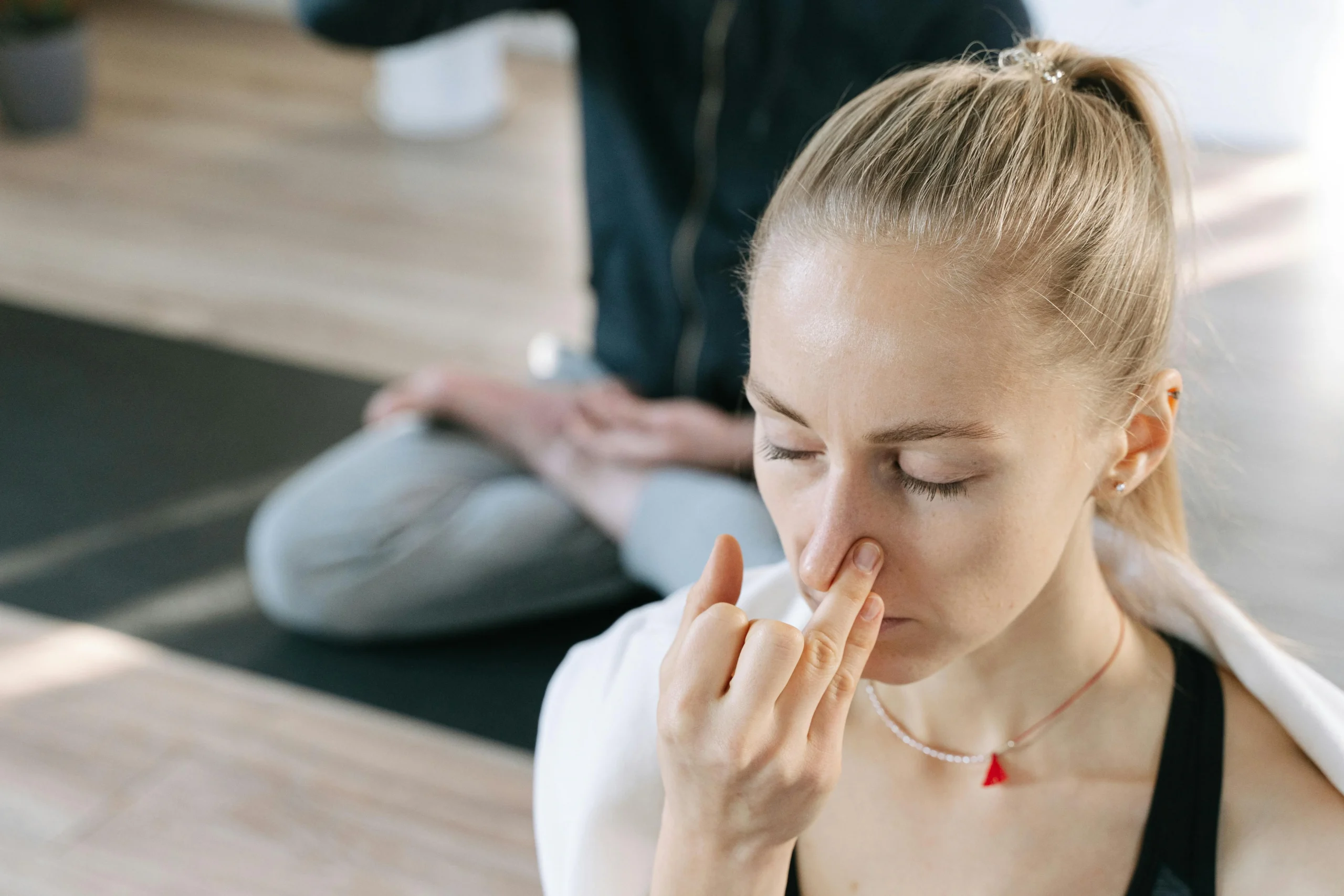
Breathwork has become a buzzword in the wellness world. It’s on social media, in studios, and even in corporate settings. But long before it became trendy, ancient yogis were practicing pranayama—not for hype, but because they understood its powerful effects on the body, mind, and energy system. For them, breath wasn’t something automatic; it was a pathway to transformation.
Today, we have modern research confirming what yogis realized through centuries of practice. When we slow and regulate our breath, we activate the parasympathetic nervous system—the part of the body responsible for rest, digestion, and recovery. This shift reduces stress hormones like cortisol, lowers the heart rate, and relaxes tension. It also influences the vagus nerve, which plays a major role in emotional regulation, heart health, and overall resilience. This is where ancient pranayama and modern breathwork meet—bridging wisdom and science.
In a world filled with constant stimulation—technology, deadlines, noise—these effects are more relevant than ever.
Many people experience symptoms of stress and anxiety, difficulty focusing, disrupted sleep, or chronic patterns of shallow breathing.
Ancient pranayama techniques offer powerful tools, and modern breathwork practices often draw directly from these origins. While pranayama isn’t a medical treatment, it can help manage stress-related symptoms, improve mood, support lung function, and increase self-awareness.
Nadi Shodhana can be especially helpful before bedtime, a big presentation, or anytime the mind feels scattered. By balancing the breath through both nostrils, it helps settle the mind’s energy and create clarity.
4-7-8 breathing is a wonderful technique for easing anxious moments, slowing racing thoughts, or gently guiding the body toward rest.
Diaphragmatic breathing, placing attention on the belly’s natural rise and fall, helps retrain the body away from rapid, shallow chest breathing and encourages a calmer stress response.
Energizing practices like Kapalabhati can support people who feel sluggish, fatigued, or mentally foggy, giving them a natural lift without caffeine or overstimulation.
Even simple breath awareness — pausing to observe the inhale and exhale — creates space between stimulus and response.
This is the space where healing, choice, and self-regulation begin. And this is why breathwork, when practiced consistently, becomes more than just a technique—it becomes a relationship with your inner landscape.
Breathwork may be trending, But its roots lie in wisdom traditions that recognized the breath as a bridge—between the physical body and the energetic body, between the mind’s noise and inner stillness. By practicing pranayama today, we tap into ancient tools designed to bring us home to ourselves.
Let’s take a moment now to settle in, close the eyes if that feels comfortable, and simply notice the rhythm of your natural breath…
Balancing the breath through both nostrils.
Ease anxious moments, slow racing thoughts, gently guide the body to rest.
Focus on the belly’s natural rise and fall, retraining calm breathing.
Breathwork refers to intentional breathing practices designed to influence your physical, mental, and emotional state. It includes ancient yogic pranayama techniques, as well as modern methods that focus on regulating the nervous system, boosting energy, or cultivating presence.
Breathwork can support stress reduction, improve focus, help calm anxiety, enhance emotional regulation, and increase feelings of clarity and connection. It also activates the body’s natural relaxation response and can help you shift out of “fight-or-flight” mode. While it’s not a medical treatment, many people use it as a supportive tool for wellbeing.
Most gentle techniques are safe for the majority of people, especially practices that slow and deepen the breath. However, more intense or rapid-breathing styles may not be suitable for individuals with certain health conditions, such as respiratory issues, heart concerns, or pregnancy. It’s always wise to start slowly and listen to your body; if you’re unsure, check with a qualified teacher or healthcare professional.
You don’t need long sessions to benefit. Even 3–5 minutes of mindful breathing each day can make a difference. Many people find a short daily practice more effective than longer, occasional sessions. Consistency matters more than duration.
Breathwork uses specific patterns of breathing to shift your state, whereas meditation can be practiced with or without breath awareness. Breathwork can make meditation easier by settling the body and quieting the mind. Think of it as a bridge that prepares you for deeper stillness and clarity.